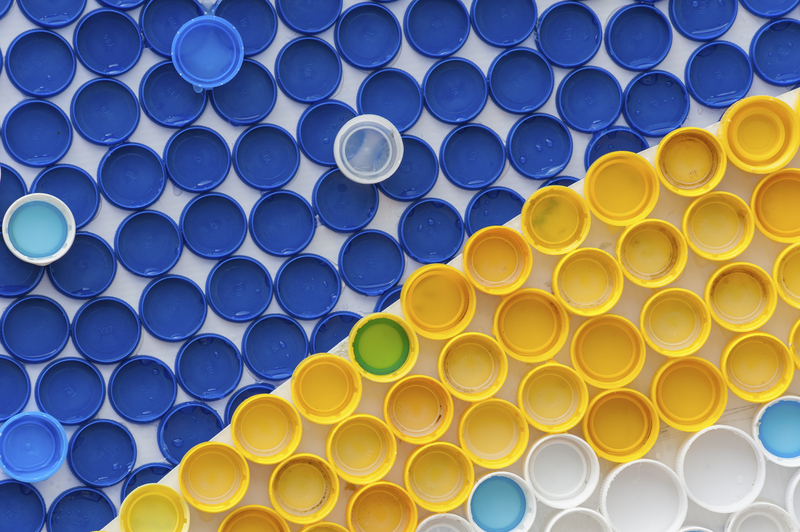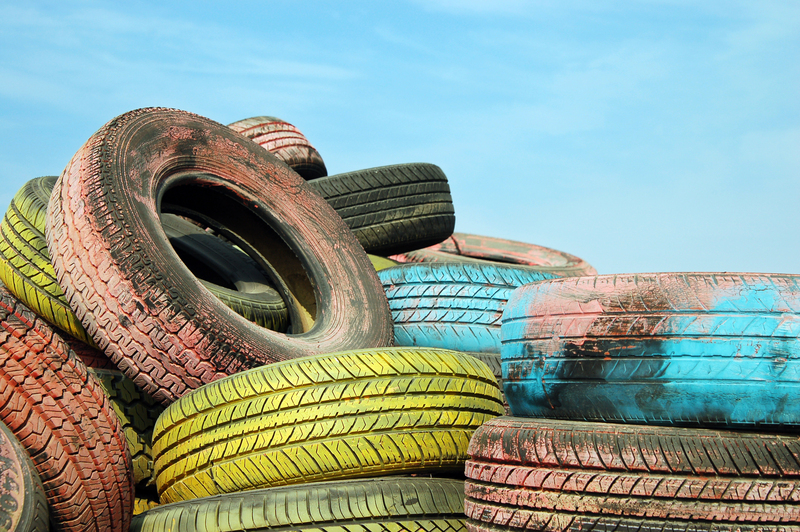Uniting Against Microplastic Pollution: Can We Triumph?
Microplastic pollution has emerged as one of the most significant environmental threats of the 21st century. These tiny plastic particles, less than five millimeters in diameter, are everywhere--from the deepest ocean trenches to the soils beneath our feet. Yet, as daunting as the challenge may seem, humanity's capacity to innovate and cooperate offers hope. In this comprehensive article, we explore the scope of microplastic pollution, examine its impacts, and ask the critical question: Can we unite to triumph over microplastic pollution?
Understanding Microplastic Pollution
What Are Microplastics?
Microplastics are small plastic fragments resulting from the breakdown of larger plastic items or are manufactured at microscopic sizes, such as those found in personal care products. They are typically classified into two categories:
- Primary microplastics: Intentionally manufactured small plastics, such as microbeads in cosmetics and industrial scrubbers.
- Secondary microplastics: Formed from the fragmentation of larger plastics, such as bottles and bags, due to environmental exposure and degradation.
Where Do Microplastics Come From?
Microplastics originate from a variety of sources:
- Personal care products (e.g., microbeads in scrubs and toothpaste)
- Laundry processes (synthetic textiles shedding fibers)
- Tire wear particles
- Degraded plastic waste in the environment
- Industrial processes
The ubiquity of microplastics makes them a major concern for environmental scientists and policymakers alike.

The Global Scale of Microplastic Pollution
How Widespread Is the Problem?
In recent years, research has demonstrated that microplastic contamination is widespread. These invisible enemies are present in:
- Rivers and oceans
- Soils and farmlands
- Drinking water and bottled water
- Atmospheric airborne dust
- Marine organisms and even human tissues
It's estimated that over 51 trillion microplastic particles currently litter our oceans. This immense scale underscores the urgent need for a united global response.
The Impact on Environment and Health
Microplastic debris does not merely pollute; it disrupts ecosystems and poses potential risks to human health:
- Wildlife ingestion: Fish, seabirds and marine mammals mistake microplastics for food, leading to malnutrition, physical harm, and possible death.
- Bioaccumulation: Microplastics absorb and transport toxic compounds, which can accumulate through aquatic food chains and potentially impact human consumers of seafood.
- Soil health: Microplastics interfere with soil structure and microbial communities, impacting plant growth and agricultural productivity.
- Potential human health risks: The long-term consequences of microplastics in our water, food, and air are still being investigated, but initial studies suggest potential links to inflammation, cellular damage, and hormone disruption.
Root Causes: Why Is Microplastic Pollution So Pervasive?
Understanding the roots of microplastic pollution is essential to uniting against it. Here are some critical factors:
- Global plastic production: Over 400 million tons of plastic are produced annually, much of it designed for single use.
- Improper waste management: Inefficient collection and recycling systems, especially in developing countries, lead to plastic leakage into the environment.
- Consumer culture: Convenience and affordability drive the widespread use and disposal of plastic products.
- Lack of regulation: Not all countries have strict rules on microplastics in products or plastic waste management.
Without coordinated intervention, microplastic pollution will only worsen, threatening ecosystems and public health globally.
Efforts to Combat Microplastic Pollution
International Collaboration
Global environmental problems require global solutions. Several international initiatives are underway:
- United Nations Environment Program (UNEP) coordinates global monitoring and policy actions.
- The Basel Convention on the Control of Transboundary Movements of Hazardous Wastes includes plastics in its remit.
- New international treaties are being negotiated to address plastic waste and microplastic contamination specifically.
National Legislation and Bans
Many countries are implementing regulations to address microplastics:
- Microbead bans: Several countries, including the US, UK, and Canada, have banned microbeads in personal care products.
- Single-use plastics bans: Bans on bags, straws, and other plastics help reduce secondary microplastic formation.
- Improved waste management: Investments in recycling, waste-to-energy, and landfill improvements support better plastic handling.
Innovative Solutions and Technological Advances
Science and industry are working to provide new tools in the battle against microplastic debris:
- Biodegradable alternatives: Research into bioplastics and compostable materials aims to replace conventional plastics.
- Microfiber filters: Advances in washing machine filters help capture synthetic fibers before they enter waterways.
- Water treatment upgrades: Upgrades to wastewater treatment plants improve their ability to filter out microplastics.
- Ocean and river cleanup devices: Organizations are designing floating barriers and skimmers to remove plastic particles from water.
Such technological interventions are vital, but preventing plastics from reaching the environment in the first place is equally important.
The Power of Individual and Community Action
What Can You Do?
Every action matters in the fight against microplastic pollution:
- Reduce plastic use: Opt for reusable, non-plastic products whenever possible.
- Proper recycling: Familiarize yourself with local recycling guidelines to ensure plastics are disposed of correctly.
- Support bans and policies: Advocate for stronger regulations on microplastics and single-use plastics.
- Participate in cleanups: Join or organize local cleanups to remove litter from rivers, beaches, and communities.
- Educate others: Raise awareness about the impact of microplastics among friends, family, and your community.
Innovative Grassroots Projects
Across the globe, grassroots initiatives are making a difference:
- Community-based recycling programs transforming plastic waste into usable products
- Educational campaigns in schools to reduce plastic use at an early age
- Citizen science projects collecting data on local microplastic pollution to inform policy
- Volunteer groups developing creative ways to replace plastics with sustainable alternatives
The power of ordinary people building momentum for change cannot be underestimated in uniting against microplastic pollution.
Battling Microplastic Pollution: Triumphs and Challenges
Success Stories
There are examples where determined action has made a measurable difference:
- Countries that enacted microbead bans showing reductions in primary microplastics in their waterways
- Local bans on plastic bags leading to a visible drop in street and beach litter
- Innovative recycling initiatives diverting tons of plastic from landfills and incineration
- Cleaning up major rivers with barriers and skimmers reducing plastic flow into the ocean
These victories prove that concerted efforts can yield real results in reducing microplastic contamination.
Persistent Barriers
Despite progress, significant obstacles remain:
- Plastic production is still rising globally.
- Recycling rates remain low in many countries due to technical and economic barriers.
- Data gaps: Much is still unknown about microplastics' effects on human health and how best to mitigate them.
- Lack of worldwide regulations and enforcement impedes coordinated action.
The battle is ongoing, and overcoming these barriers requires a united, global effort.

The Path Forward: Can We Triumph Over Microplastic Pollution?
Why Unity Is Essential
Uniting against microplastic pollution means collaboration at every level: governments, industries, scientists, and citizens. No single entity can solve the crisis alone, as microplastics cross borders and permeate ecosystems globally. The necessity of sharing technology, information, and resources is paramount if we are to make substantial progress.
- International cooperation on research and regulations
- Public-private partnerships to develop alternatives and scale up solutions
- Global campaigns to educate and empower consumers
- Investment in innovation and infrastructure
Only through collective will and unified action can we hope to reduce pollution and safeguard future generations.
The Role of Science and Innovation
Science provides essential insights and tools for tackling microplastics:
- Mapping and measuring microplastics in various environments to target solutions
- Developing new materials to replace conventional plastics
- Engineering improved filtration and recycling systems
- Evaluating health impacts and establishing safe exposure levels
Ongoing research is fundamental to making informed decisions and prioritizing actions with the greatest positive impact.
The Will to Triumph
The question remains: Can we triumph over microplastic pollution? The answer rests upon our ability to do the following:
- Recognize the scale and urgency of the crisis
- Mobilize resources at the local, national, and international levels
- Innovate new solutions and phase out unnecessary plastics
- Engage and empower communities around the globe
- Hold governments and corporations accountable for progress
History shows that united action can overcome enormous challenges. The fight against microplastic pollution will require unrelenting commitment, creativity, and courage. By harnessing these qualities, triumph is within our reach.
Conclusion: A Future Free From Microplastic Pollution?
Microplastic pollution symbolizes one of the most complex challenges of our time, but it also represents an opportunity for humanity to unite in stewardship of our planet. Victory will not come overnight. But, with determination, innovation, and global unity, we can reduce microplastic contamination and build a healthier future for our oceans, wildlife, and ourselves.
The journey ahead calls each of us to act--whether by embracing sustainable choices, advocating for policy change, or supporting groundbreaking research. Together, we can triumph over microplastic contamination and forge a cleaner, safer world for generations to come.
Let us unite now--against microplastic pollution--and for the future of our shared planet.

